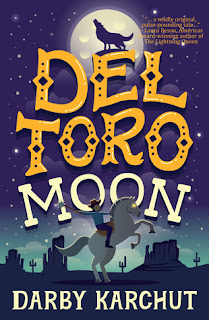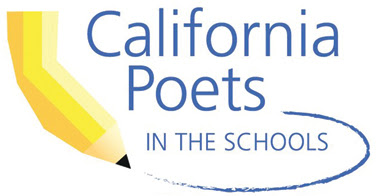Sunday, August 26, 2018
Hat and blouses in school colors
Completed just in time for school pictures this past week at Santa Rosa Charter School for the Arts: a couple of blouses, and a “newsboy” hat in the school colors of black, white and gold. Over the summer, I was given an unused stash of various quilting fabrics, and these projects made good use of it. The blouses each come from commercial patterns (shown in the photograph), while the hat is based on piecework I used to do for Hat People in southern Oregon.
‘Helmet liners’ sewn with patch-work
Reverse-engineered Jonathan’s “helmet liner,” to produce these new articles for him to wear over his hair during exercise. I’m especially proud of the black-and-white, for which I pieced together various squares of fabric — part of a long-term, lifelong-benefit result of being taught Home Ec in high school.
Saturday, August 18, 2018
YALSA ‘Teens’ Top Ten,’ voting open
Voting opened Aug. 15 for the “Teens’ Top Ten,” a list of books compiled each year by the Young Adult Library Services Association. The nominators are members of teen book groups in 15 school and public libraries.
Young people ages 12 to 18 can vote now through Teen Read Week (Oct. 7 to 13). Look for these titles at your local public library, and consider casting your vote. The top vote-getters will become the official “Teens’ Top Ten” for 2018.
Young people ages 12 to 18 can vote now through Teen Read Week (Oct. 7 to 13). Look for these titles at your local public library, and consider casting your vote. The top vote-getters will become the official “Teens’ Top Ten” for 2018.
Thursday, August 16, 2018
Free books attract readers
Nothing like a free-book cart to really draw a crowd, shown here outside the library at Santa Rosa Charter School for the Arts. One of our teachers recently cleared out old chapter-books from her shelves and brought the books to me in the library to help with re-homing them. I put them out on a movable cart, and have been rolling it outside during recesses. It was gratifying to see both children and adults stopping to browse the selection and even to take books away with them.
‘Ghosted’ by Leslie Margolis
I wanted to read this book because it’s from the perspective of the mean girl -- a perspective that I think is important to understand if we’re to combat bullying.
Why do people engage in bullying behavior? What needs or desires does it speak to? What would it take to get them to stop?
In the case of Ghosted, the bully point-of-view character is a girl named Ellie.
First of all, what I like about this book is the idea that someone can change. Who you are now does not define you forever. That said, I didn’t find it believable when Ellie changed for the better.
Why do people engage in bullying behavior? What needs or desires does it speak to? What would it take to get them to stop?
In the case of Ghosted, the bully point-of-view character is a girl named Ellie.
First of all, what I like about this book is the idea that someone can change. Who you are now does not define you forever. That said, I didn’t find it believable when Ellie changed for the better.
Tuesday, August 14, 2018
‘The Owls Have Come to Take Us Away’
What an intense read: gripping, suspenseful; it kept me thoroughly engrossed, wanting to know what happened next. Things build inexorably to a climactic moment that caught this reader, at least, up in the urgency and drama.
The protagonist, Simon, is obsessed with aliens, and especially with tales of alien abduction.
One day, Simon goes camping with his parents, who send him into the woods to gather firewood. While alone in the woods, he sees a pulsing light and what he thinks is an owl; next thing he knows, he is lying on the ground and his parents are bending over him.
Simon believes — knows — that he was abducted by aliens, the “Grays,” as they are referred to. But no one will believe him; his parents send him to a psychiatrist who simply medicates him.
The protagonist, Simon, is obsessed with aliens, and especially with tales of alien abduction.
One day, Simon goes camping with his parents, who send him into the woods to gather firewood. While alone in the woods, he sees a pulsing light and what he thinks is an owl; next thing he knows, he is lying on the ground and his parents are bending over him.
Simon believes — knows — that he was abducted by aliens, the “Grays,” as they are referred to. But no one will believe him; his parents send him to a psychiatrist who simply medicates him.
Sunday, August 12, 2018
‘Pisu’s Revenge’ by Susha Golomb
Momentum for this book built slowly, possibly because of world-building and a formal writing-style, but altogether I found it an enjoyable read that set my interest for later books.
I might recommend this book to niche-readers who enjoy stories set around animal societies — maybe readers of Erin Hunter’s Warriors or Deborah Grabien’s Dark’s Tale.
Pisu’s Revenge (IBPA, July 2018) is told in first-person by Tefnut, a cat, who recounts her early experiences among a litter of four cats that included her brother, Pisu. The cats reside in Ailuria, “a little country by the sea, tucked into a small corner of The Greater Elf Kingdom.”
I might recommend this book to niche-readers who enjoy stories set around animal societies — maybe readers of Erin Hunter’s Warriors or Deborah Grabien’s Dark’s Tale.
Pisu’s Revenge (IBPA, July 2018) is told in first-person by Tefnut, a cat, who recounts her early experiences among a litter of four cats that included her brother, Pisu. The cats reside in Ailuria, “a little country by the sea, tucked into a small corner of The Greater Elf Kingdom.”
‘The Eleventh Trade’ by Alyssa Hollingsworth
When Sami and his baba (grandfather) escaped to America from Afghanistan, the only possession from home that they managed to bring with them was Baba’s rebab, a traditional Afghan instrument.
Baba, who was a renowned musician back in Afghanistan, makes his living playing the rebab in the subway to earn tips from rush-hour Bostonians — but one day, someone steals the rebab, snatches it right out of Sami’s arms.
Sami feels responsible for costing Baba his only livelihood, as well as losing the only thing they had that reminded them of home.
Sami tracks the rebab to a pawnshop and makes a bargain with the owner: give him 28 days to come up with $700 in order to redeem the instrument. But the only thing Sami has of value is a Manchester United keychain. Would it be possible for Sami to trade-up items in order to reach his goal?
Baba, who was a renowned musician back in Afghanistan, makes his living playing the rebab in the subway to earn tips from rush-hour Bostonians — but one day, someone steals the rebab, snatches it right out of Sami’s arms.
Sami feels responsible for costing Baba his only livelihood, as well as losing the only thing they had that reminded them of home.
Sami tracks the rebab to a pawnshop and makes a bargain with the owner: give him 28 days to come up with $700 in order to redeem the instrument. But the only thing Sami has of value is a Manchester United keychain. Would it be possible for Sami to trade-up items in order to reach his goal?
Saturday, August 11, 2018
‘Del Toro Moon’ by Darby Karchut
Four centuries ago, Santiago Del Toro, his brother-knights and their warhorses arrived in the New World with a special mandate from the monarch of Spain: to contain an ancient evil inside enchanted coffers and keep that evil from escaping.
Del Toro and his brother-knights were accompanied by their Andalusian warhorses and magic-enhanced maces - effective weapons against the monsters.
The coffers were hidden throughout the New World — each guarded by a knight and then, in-turn, by that knight’s descendents.
For 500 years, generations of Del Toros have continued this quest — safeguarding a coffer hidden in the El Laberinto Wilderness Area near Huerfano, Colorado.
Del Toro and his brother-knights were accompanied by their Andalusian warhorses and magic-enhanced maces - effective weapons against the monsters.
The coffers were hidden throughout the New World — each guarded by a knight and then, in-turn, by that knight’s descendents.
For 500 years, generations of Del Toros have continued this quest — safeguarding a coffer hidden in the El Laberinto Wilderness Area near Huerfano, Colorado.
‘Shelfie’ for National Booklovers’ Day
In honor of National Booklovers’ Day on Aug. 9, 2018, Sonoma County Library asked people to post “shelfies,” that is, pictures of their bookshelves. Here’s a section from my family’s home library (which I organize according to the Dewey Decimal System). What else is Dewey good for? I also use the classification with my blog-post subject tags.
Sunday, August 5, 2018
CalPoets relocates to Santa Rosa
Here’s a potentially exciting development in the realm of poetry in Sonoma County classrooms: California Poets in the Schools, a statewide literary nonprofit, has relocated to Santa Rosa. (Source: Press Democrat, Aug. 2, 2018.)
I am most familiar with this organization through the Poetry Out Loud national recitation contest. CalPoets co-sponsors Poetry Out Loud, with the California Arts Council.
(As former newspaper arts editor and volunteer-producer of an Arts Council newsletter, I used to follow and report on Poetry Out Loud in Lake County, California.)
High-school students memorize and recite a famous poem, beginning at the school-wide level. Doing so helps them to “master public speaking skills, build self-confidence, and learn about literary history and contemporary life,” according to the Poetry Out Loud website.
Local winners advance to regional/state competition and then to the national finals.
Within Sonoma County, according to the Press Democrat, “CalPoets reaches nearly 30 schools and 4,000 K-12 students, and within the state it reaches about 28,000 youth.
“With the move to Santa Rosa, CalPoets plans to extend its reach, with more poets in schools, more poetry booths at art festivals, and poetry in parks and parking lots.”
Friday, August 3, 2018
Children need to ‘see themselves’ in stories
Three children’s book authors recently shared their perspectives on not being able to see people like themselves as a story’s main character. The piece’s author, Colleen R. Lee, shares an incident with a customer that underscored, for her, “how important diversity in literature is for children.” (Via Knowledge Quest, American Association of School Librarians)
‘Google It’ by Anna Crowley Redding
Google It by Anna Crowley Redding (Feiwel and Friends, 2018) tells the story of Google and founders Larry Page and Sergey Brin.
This book follows Google’s origin as a doctoral thesis project at Stanford University, to its existence today as part of a company that has revolutionized technology and the seeking of information.
Prior to Google, Internet searches were based solely on keywords. “So if you were looking for information about horses, web searches would give you every site that mentioned the word horse. And you would have to sit there and load each result, searching for the information you needed.”
This book follows Google’s origin as a doctoral thesis project at Stanford University, to its existence today as part of a company that has revolutionized technology and the seeking of information.
Prior to Google, Internet searches were based solely on keywords. “So if you were looking for information about horses, web searches would give you every site that mentioned the word horse. And you would have to sit there and load each result, searching for the information you needed.”
School library ‘climate’ supports diversity
A school library’s “climate” goes a long way toward acknowledging and promoting diversity. Michelle Easley offers several practical suggestions to help create a library climate where everyone is welcome. (Via Knowledge Quest, American Association of School Librarians)
Wednesday, August 1, 2018
Early start on processing new curriculum
Been getting an early start on processing new English language-arts curriculum for Santa Rosa Charter School for the Arts. Appreciation to Santa Rosa City Schools for granting me these extra hours. It’ll make a big difference for getting these materials ready, as “user-friendly” as I can make them, for my classroom customers.
‘Escape to the Above’ by Adam Jay Epstein
When a questing hero races through a tomb — pursued by an enormous boulder or bombarded with a flight of poisoned darts — do you ever think about whose job it must’ve been to set up those lavish obstacles?
Wily Snare is a “trapsmith,” employed by a reclusive wizard who jealously guards his treasure. Wily has worked for the wizard Stalag for as long as he can remember: keeping the traps in working order, cleaning up after and coaching the “monsters” who help to guard the tomb, and clearing away the latest set of unconscious heroes before the next “visitors” arrive.
Wily has never been above-ground because Stalag convinced him that he would die if he was exposed to sunlight. Stalag has told him a lot of things, actually. But an unusual set of tomb-raiding adventurers bring unimaginable change to Wily’s ordered existence.
Escape to the Above is an exciting tale, told from the perspective of a skilled technician who understands the dungeon’s secrets in a way that few others do. I look forward to further adventures of Wily and his friends.
Wily Snare is a “trapsmith,” employed by a reclusive wizard who jealously guards his treasure. Wily has worked for the wizard Stalag for as long as he can remember: keeping the traps in working order, cleaning up after and coaching the “monsters” who help to guard the tomb, and clearing away the latest set of unconscious heroes before the next “visitors” arrive.
Wily has never been above-ground because Stalag convinced him that he would die if he was exposed to sunlight. Stalag has told him a lot of things, actually. But an unusual set of tomb-raiding adventurers bring unimaginable change to Wily’s ordered existence.
Escape to the Above is an exciting tale, told from the perspective of a skilled technician who understands the dungeon’s secrets in a way that few others do. I look forward to further adventures of Wily and his friends.
In tight labor market, skilled applicants should ‘rise to top’
Inexperienced job applicants face “their best odds of success in years” as employers drop work-history and degree requirements. That’s according to Kelsey Gee, writing for the Wall Street Journal.
Subscribe to:
Posts (Atom)
Subject Classifications (Partial list, via Dewey Decimal System)
- 006.754-Social Media
- 020-Library and Information Science
- 020.7025-Library Education
- 020.92-Cynthia M. Parkhill (Biographical)
- 023.3-Library Workers
- 025.02-Technical Services (Libraries)
- 025.04-Internet Access
- 025.2-Libraries--Collection Development
- 025.213-Libraries--Censorship
- 025.3-Libraries--Cataloging
- 027.473-Public Libraries--Sonoma County CA
- 027.663-Libraries and people with disabilities
- 027.7-Academic Libraries--University of Central Missouri
- 027.8-School Libraries--Santa Rosa Charter School for the Arts
- 028.52-Children's Literature
- 028.535-Young Adult Literature
- 028.7-Information Literacy
- 158.2-Social Intelligence
- 302.34-Bullying
- 306.76-Sexual orientation and gender identity
- 371-Schools--Santa Rosa Charter School for the Arts
- 371-Schools--Santa Rosa City Schools
- 616.898-Autism
- 636.8-Cats
- 646.2-Sewing
- 658.812-Customer Service
- 659.2-Public Relations
- 686.22-Graphic Design
- 700-The Arts
- 746.43-Yarn bombing (Knitting and Crochet)
- 809-Book Reviews













